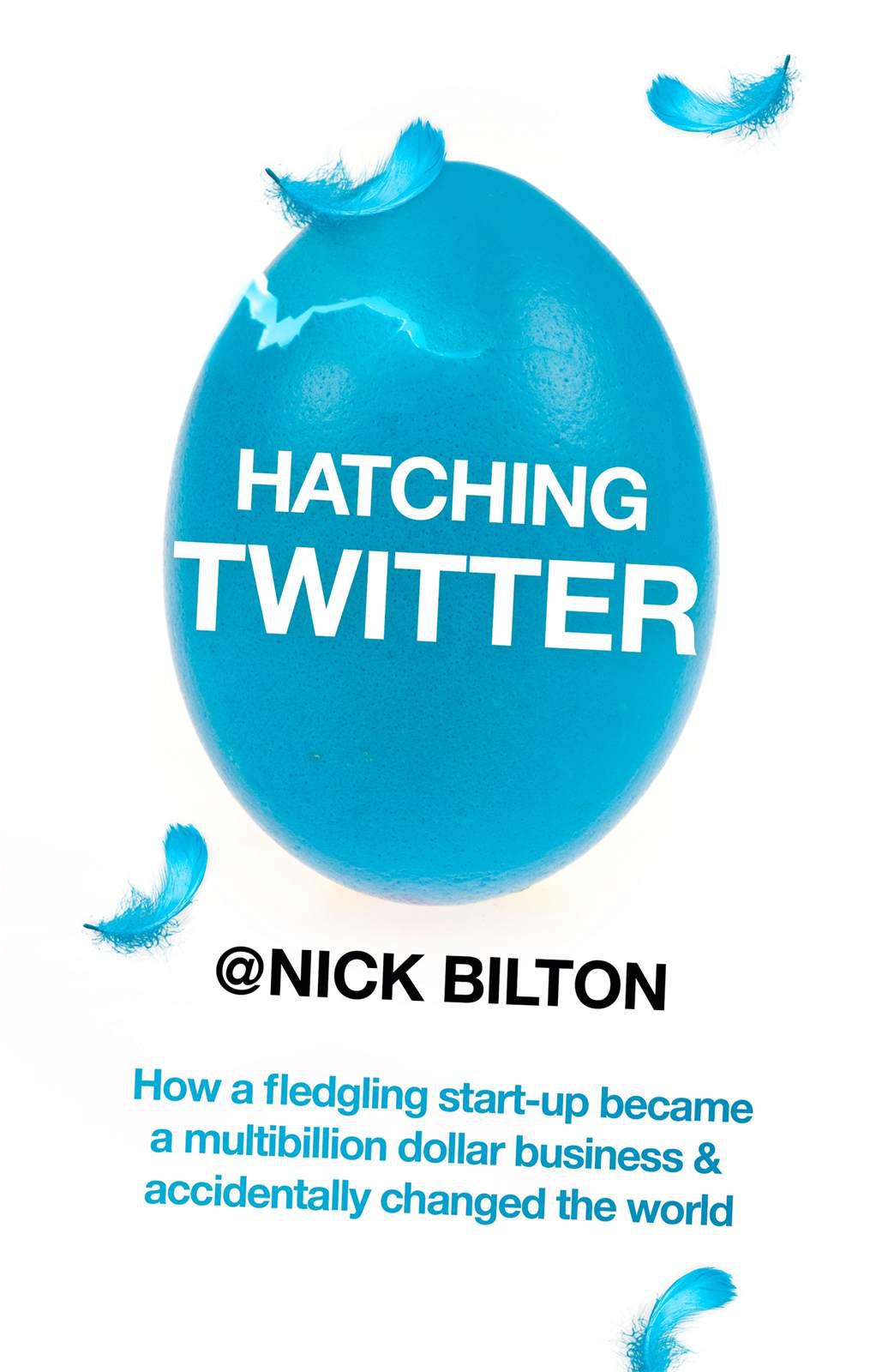Hatching Twitter Summary
7 min read ⌚
How a Fledgling Startup Became a Multibillion-Dollar Business & Accidentally Changed the World, aka A True Story of Money, Power, Friendship, & Betrayal
“It’s good to have friends in business” – a famous maxim claims – “but you shouldn’t go into business with your friends.”
You can learn this the easy way or the hard way. If experiencing it personally is the hard way, then learning from other people’s fortunes and misfortunes must be the easy one.
This summary goes over the main points of one such story. And it’s certainly easier to read few hundred words than 300 pages! You’ll uncover the history of power struggles going on behind Twitter’s closed doors either way.
So, why don’t you?
Who Should Read “Hatching Twitter”? And Why?
With over 300 million active users monthly, it’s an understatement to say that Twitter is big. As a matter of fact, it’s huge!
Let us rephrase that: it’s gigantic! It’s one of the ten most-visited websites, handling billions of search queries per day and bringing revenue of over $2.5 billion!
Having in mind all this data, it’s easy to forget that only a decade ago, Twitter didn’t even exist. “Hatching Twitter” is all about how it all started and how it got to become so large. This comes at a price, though, as power and money reshape attitudes, and friendships turn to enmities.
It’s one of those unlikely fiction-like stories which actually happened. So, it’s safe to say that this book will captivate the imaginations of many. It has everything: letdowns and triumphs, betrayals and comebacks.
Investors and entrepreneurs will certainly enjoy it. Those who like books like “The Everything Store” or “Steve Jobs” – even more. But, even if you merely want a good thriller about corporate power struggles – you should have a look at “Hatching Twitter.”
About Nick Bilton
Nick Bilton is a British-American journalist and author of three well-received books: “Hatching Twitter,” “I Live in the Future & Here’s How It Works,” and, most recently, “American Kingpin.”
A former columnist for The New York Times, he is currently a Special Correspondent for Vanity Fair and a contributor at CNBC.
The rights for “Hatching Twitter” were bought by Lionsgate and, according to recent reports, the book is in the final stages of adaptation as a TV series.
“Hatching Twitter Summary”
Ready for a fascinating corporate story? Complete with all the narcissism and juicy details you would expect from the best ones?
Here we go!
It all starts with Evan “Ev” Williams who earned a lot of money by founding and developing “Blogger.” Noah Glass found a photo of his offices in a “Forbes” article about Williams in 2002 (yes, this is still few years before “Twitter”) and realized that they were located just across the street from him.
Glass introduced himself to Williams by shouting from his window. The two became friends but weren’t really working together before Williams sold “Blogger” to Google in 2003.
It was then that they became business associates: Williams invested in Glass’ new business, Odeo, a Blogger app which was intended to allow users to upload voice messages to their blog posts.
He didn’t really want to mix business with friendship. But he didn’t want to be remembered as “one-hit wonder” either.
Biz Stone, an entrepreneur, and Jack Dorsey, a brilliant computer programmer, joined Odeo in 2005. But, in June that year, Apple released iTunes 4.9 which included podcast support. Odeo was suddenly an all but a dead idea.
While brainstorming new ideas, in a drink-fueled conversation, Jack Dorsey suggested Williams and Glass “a status updater.” Williams, then-CEO of Odeo, green-lighted the idea, and Glass came up with the name “Twttr.” (The vowels would come later.)
On March 21, 2006, at 8:50 PM GMT, Jack Dorsey sent the first tweet: “just setting up my twttr.”
The problems soon arrived. At a party, intoxicated, Noah Glass broke the vow of silence given between the originators and told few people about the idea they had. Dorsey was furious to find articles about “Twttr” all around.
He gave Williams an ultimatum: either Glass goes, or he goes. Williams decided on the former. Dorsey was more important to the company. So much with friendship!
In the meantime, Williams developed a thinktank called Obvious Corporation and chose to focus on it. Even though he owned two-thirds of Twitter, he rejected the job as CEO, driving Dorsey to the position. The company started growing.
But, the friendship between Williams and Dorsey started dwindling.
No surprises there!
So, when Twitter’s chief engineer announced that Twitter had no backup, Dorsey was ousted from his position as a CEO, with Williams taking over. Dorsey didn’t take this lightly.
You see, Dorsey considered Twitter to be both his brain- and lovechild.
So, he used the media to share his side of the story with the world. He presented himself as Twitter’s only inventor and created a worldwide impression that he’s still running the company. He had no part in it, but the papers weren’t bereaved of titles such as “Jack Dorsey – the new Steve Jobs.”
Even more, when a group of prominent tech wizards visited Iraq, Twitter was represented by – you’ve guessed it – Jack Dorsey! He even lured one of Twitter’s major investors, Peter Fenton, who believed him more than he believed Williams.
In the meantime, Twitter grew to become the best way to share the news. Whether it was earthquakes, presidential campaigns or revolutions, it seemed as if everybody tweeted and retweeted. By 2009, over 30 million tweets a day were sent using the platform!
Ready for the twist?
Williams always struggled with decision-making. And, because of it, he was an easy target for Dorsey. With Fenton on his side, Dorsey started a campaign against Williams. Williams didn’t think much of it until it was too late.
By the end of 2010, he was out of the company, and Dorsey was back in. Dick Costolo took over as a CEO, and he struck lucrative deals with Google and Bing.
In a year or so, you’d need ten zeroes to write anything about Twitter’s value.
Key Lessons from “Hatching Twitter”
1. Friends and Business Don’t Go That Well Together
2. Where There’s Money, There’s Also Plenty of Drama
3. A Good Idea Will Find Its Way – No Matter What
Friends and Business Don’t Go That Well Together
We started our summary with an old and familiar quote. Coincidentally, one of the key lessons “Hatching Twitter” may teach you is the very same.
The problem may be that, as good as they are as people, your friends may not be as talented to consider them as business associates. But, once they do become part of your business, it will be hard to let them go without gravely severing the ties.
What happens with the original idea, the one you might have shared?
Well, in “Hamlet,” Polonius advises his son to never loan money to a friend, because “loan oft loses both itself and friend.”
“Hatching Twitter” shows that it’s the same with ideas.
Where There’s Money, There’s Also Plenty of Drama
It may be a bit more complicated, though.
If your business is a small or a medium one, things may not get that bad. But, in the case of large business such as “Twitter,” things are bound to become ugly.
Because, with large businesses comes money, and with money comes status. Finally, with status, comes celebrity. And it’s a simple evolutionary trait that we want to leave some mark behind us.
What if that mark is something like “Twitter”?
Expect drama.
A Good Idea Will Find Its Way – No Matter What
What’s most fascinating, however, is that, despite all the turmoil and internal unrest, Twitter succeeded.
It’s really difficult – if not impossible – to ruin a great idea. The difficult part is to utilize the effects of it yourself. Because, one way or another, the idea will find its way.
In your hands or in someone else’s.
Like this summary? We’d Like to invite you to download our free 12 min app, for more amazing summaries and audiobooks.
“Hatching Twitter” Quotes
You might have had better luck stopping the earth from spinning than barring Evan Williams from raising one of his idea hatchlings. Share on X When Ev hired someone new, rather than wait to trust them with confidential information or important tasks, he chose to trust them immediately. Share on X He had a vision for Blogger, where anyone could have their own blog, the equivalent of their own online newspaper. Share on X Twitter was barely a newborn at the time, but there was already squabbling over who had fed it, who had let others go near it. Share on X Noah yearned to join a group of friends huddling together trying to change the world with code. Share on X It wasn’t just about sharing what kind of music you were listening to or where you were at that moment; it was about connecting people and making them feel less alone. Share on XOur Critical Review
“Hatching Twitter” is written in such an absorbing style that, for the most part, it reads like a novel. A gut-wrenching business thriller. Bilton possesses a great storytelling gift and the strengths of a high-quality writer.
What’s more, he is aware of his qualities and employs them throughout his work. Scene-setting descriptions, atmosphere-capturing adjectives, quotable lines – you can find it all in “Hatching Twitter.”
What you won’t find, however, are references and index. And for a non-fiction book – that’s a serious “no-no.” Sure, the book is based on interviews with the protagonists, but referencing is part of a researcher’s job.
And indexes exist to make the lives of the readers easier and more comfortable.
To cut a long story short, both the best and the worst side of “Hatching Twitter” is its novel-like quality. Fortunately, the first far outdoes the latter.
Emir is the Head of Marketing at 12min. In his spare time, he loves to meditate and play soccer.









